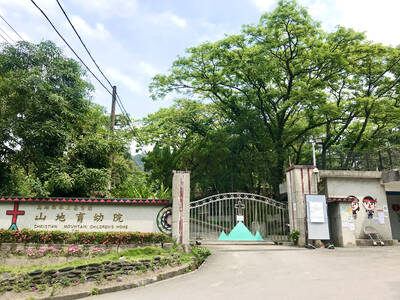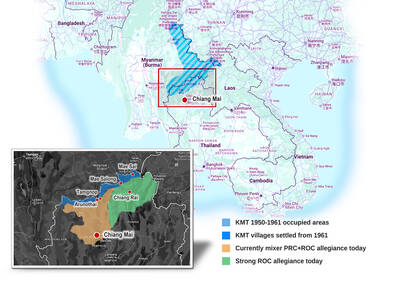Parents Restaurant (朝桂餐廳)
200 Tunhua S. Rd., Sec. 1, Taipei (北市敦化南路一段200號); Tel: 2772-8888. 11:30am - 9:30pm. Average meal: Dim-sum dishes from NT$65 to NT$150 each. English menu. Credit cards accepted.
For many Westerners, dim-sum is one of the quintessentially Chinese foods along with Peking duck and sweet and sour pork. Regional dishes have not always translated well across regional boundaries. Although Parents prides itself on offering a menu to meet all tastes, manager Cindy Chang emphasized that its dim-sum dishes are the real thing. After biting into house specialties, such as its green onion with shrimp pastries or its shrimp dumplings, any doubts are immediately dispelled -- the pastries are rich without being oily, and the fresh taste of shallots gives pungency to the succulent prawn and meat mixture inside; the dumplings, the colors of the shrimp showing through the translucent skin, are as delicate as they look.

PHOTO:IAN BARTHOLOMEW
Most dim-sum favorites are available at Parents, augmented by a selection of house specialties, such as loofah rolls with shrimp and fried shrimp rolls with almonds. While most dishes are trollied through the restaurant in the traditional dim-sum fashion, these two specialties are served directly from the kitchen.
"We place great emphasis on the freshness of ingredients," Chang said, "and we don't shy away from using expensive materials." A dish such as saut?ed shrimp with bean sprouts, the large prawns treated to nothing more than a dip in egg white before cooking, is a perfect showcase of this philosophy.
With the a la carte menu of Taiwanese favorites, Parents offers over 100 dishes, ranging from simple home fare like Taiwanese noodle soup or congee with century egg, to hotpots and exotic items like shark's fin. There is something to meet every taste without emptying every pocket -- all in an atmosphere of attentive service and subdued decor.
Plum Blossom Room, Brother Hotel
(兄弟大飯店梅花廳)
255 Nanking E. Road, Sec. 3, Taipei (北市南京東路三段255號); Tel: (02) 2712-3456. 8am to 9:30pm. Average meal: Dim-sum dishes from NT$60. English menu. Credit cards accepted
The Cantonese restaurant in the Brother Hotel long ago established a reputation for serving an excellent yum-cha, a position it still maintains. For many in Hong Kong, dim-sum is an inseparable part of the morning meal, and the Brother Hotel has maintained this tradition, with its Plum Blossom Room opening at 8am to be a viable option for breakfast or brunch.
"Businessmen come here to do some work while enjoying the dim-sum," Rebecca Chen said. The kitchens remain open throughout the day so that traditional snacks or even banquet dishes are available at all times of the day. "If you want a suckling pig, we can do one for you," Chen said.
Most of the dim-sum is displayed on trolleys, making choices easy. There are more than 40 dim-sum dishes available, in addition to a comprehensive menu of Cantonese and Taiwanese dishes.
Of the dim-sum dishes, Chen said: "Freshness is not a problem. Almost everything is taken the first time the trolley makes its round." The dumpling in soup, served in an individual container, has great complexity of both taste and texture and is one of the highlights of the restaurant's dim-sum selection. A platter of crispy suckling pig, chicken rolls wrapped in lotus leaves and shark fin dumplings are part of the wide range of flavors available.
The restaurant, which is divided between the third, fourth and 13th floors of the hotel, provides areas for intimate dining and for large banquets.
Diamond Restaurant (鑽石樓)
4F, 62-64 Jenai Rd., Sec. 4, Taipei (台北市仁愛路4段62-64號4樓); Tel: 2708-3686-8. 11:30am to midnight. Average meal: Dim-sum dishes available from NT$50. Credit cards accepted. No English menu.
One of the oldest names in the dim-sum business, Diamond Restaurant has been serving up Cantonese style food for well over 20 years. Its traditional furnishings and somewhat cavernous interior is compensated for by its excellent view over the Jenai-Tunhua roundabout.
The restaurant's buffet, priced at NT$358 for adults and NT$190 for children, is outstanding value. It offers many of the standard dim-sum dishes along with other buffet dishes from around China. While some of the dumplings suffer from being in the steamers too long, Diamond's beef pastry, taro pastry and roast pastry offer strong competition to the products of much more up-market establishments. The option of dipping into dishes such as Peking duck, a variety of soups, sweet and sour as well as fresh salad, fruit and sweets means there is something for everyone. For lunch and dinner, there are nearly 100 dishes. For afternoon tea and supper, which cost only NT$180, a reduced spread of about 30-odd dishes is offered.

May 18 to May 24 Pastor Yang Hsu’s (楊煦) congregation was shocked upon seeing the land he chose to build his orphanage. It was surrounded by mountains on three sides, and the only way to access it was to cross a river by foot. The soil was poor due to runoff, and large rocks strewn across the plot prevented much from growing. In addition, there was no running water or electricity. But it was all Yang could afford. He and his Indigenous Atayal wife Lin Feng-ying (林鳳英) had already been caring for 24 orphans in their home, and they were in

President William Lai (賴清德) yesterday delivered an address marking the first anniversary of his presidency. In the speech, Lai affirmed Taiwan’s global role in technology, trade and security. He announced economic and national security initiatives, and emphasized democratic values and cross-party cooperation. The following is the full text of his speech: Yesterday, outside of Beida Elementary School in New Taipei City’s Sanxia District (三峽), there was a major traffic accident that, sadly, claimed several lives and resulted in multiple injuries. The Executive Yuan immediately formed a task force, and last night I personally visited the victims in hospital. Central government agencies and the

Australia’s ABC last week published a piece on the recall campaign. The article emphasized the divisions in Taiwanese society and blamed the recall for worsening them. It quotes a supporter of the Taiwan People’s Party (TPP) as saying “I’m 43 years old, born and raised here, and I’ve never seen the country this divided in my entire life.” Apparently, as an adult, she slept through the post-election violence in 2000 and 2004 by the Chinese Nationalist Party (KMT), the veiled coup threats by the military when Chen Shui-bian (陳水扁) became president, the 2006 Red Shirt protests against him ginned up by

As with most of northern Thailand’s Chinese Nationalist Party (KMT) settlements, the village of Arunothai was only given a Thai name once the Thai government began in the 1970s to assert control over the border region and initiate a decades-long process of political integration. The village’s original name, bestowed by its Yunnanese founders when they first settled the valley in the late 1960s, was a Chinese name, Dagudi (大谷地), which literally translates as “a place for threshing rice.” At that time, these village founders did not know how permanent their settlement would be. Most of Arunothai’s first generation were soldiers